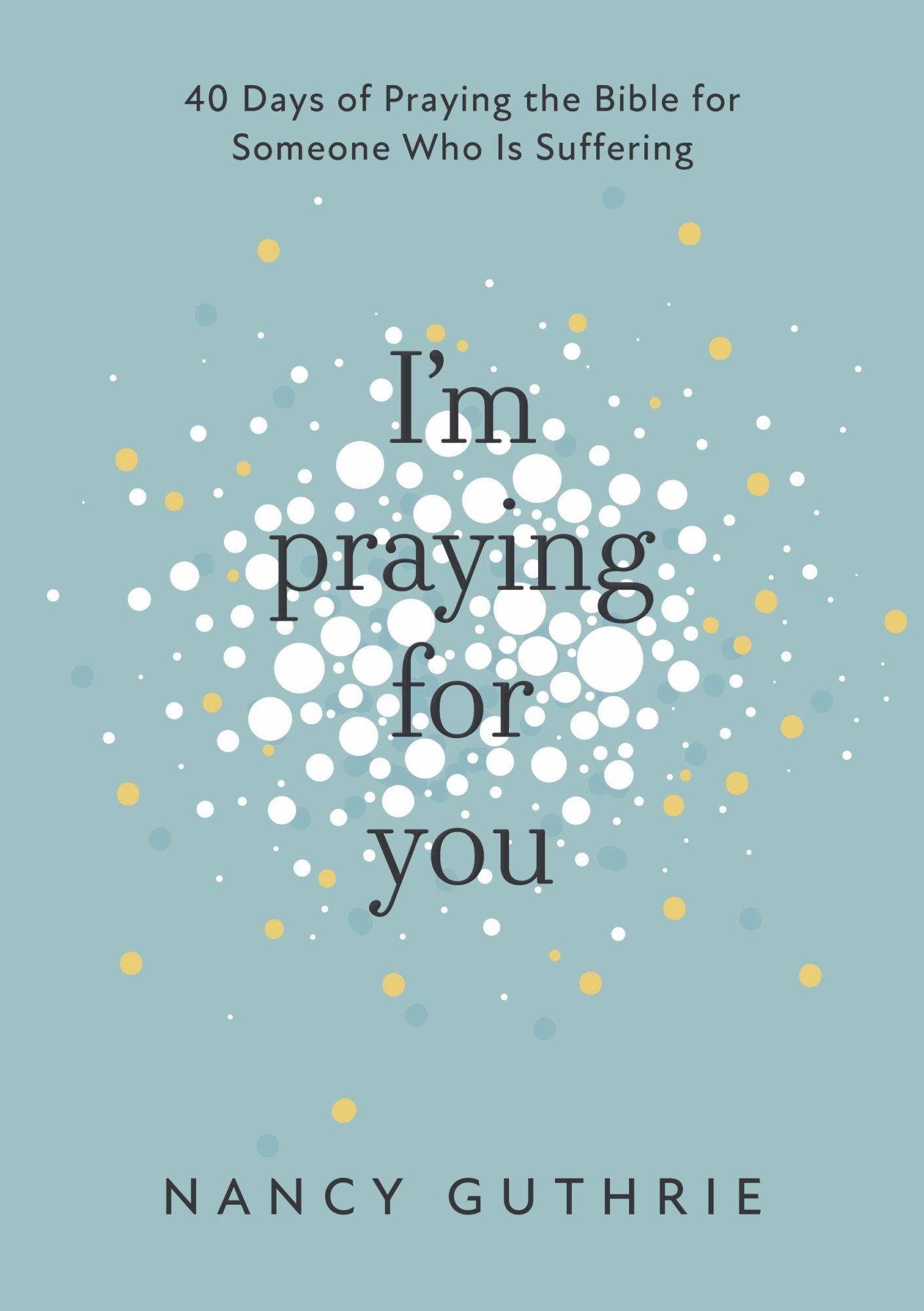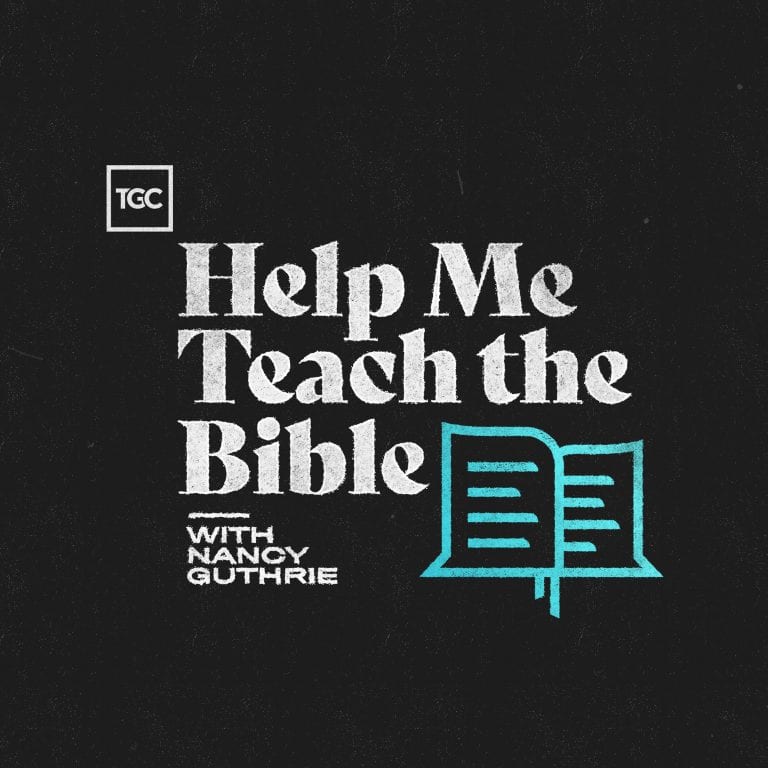A few years ago, a friend of mine died of cancer. He was a young dad with immense faith in Jesus, and some of his final words were a request to tell everyone he maintained his belief that God was good. But in the last days of my friend’s life, a visitor came into his hospice room and prayed over his unconscious body, saying repeatedly that there would be complete healing if my friend just had more faith.
That prayer was both wrong and hurtful. But what was the right way to pray in that situation? Is there a way to pray for relief from suffering while still acknowledging God’s ultimate sovereignty? How do we keep praying when God doesn’t answer in ways we desperately want?
Answers to those questions primarily reside in Scripture. And Scripture serves as the foundation for author and Bible teacher Nancy Guthrie’s new book I’m Praying for You: 40 Days of Praying the Bible for Someone Who is Suffering. The book is set up as a daily reading from the Bible, a brief devotional, and a prayer based on God’s Word.

I'm Praying for You: 40 Days of Praying the Bible for Someone Who is Suffering
Nancy Guthrie
I'm Praying for You: 40 Days of Praying the Bible for Someone Who is Suffering
Nancy Guthrie
When we hear that a friend is struggling, it can be easy to say, “I’m praying for you,” but harder to know what to actually pray. Through 40 carefully chosen Scripture passages, Nancy Guthrie opens the wealth of Scripture to teach us how to pray for those who are hurting. She shows us how the Bible provides us with a vocabulary for prayer that enables us to ask God to achieve what he intends in and through suffering. Nancy shows us how God’s purposes are revealed even in our darkest days and encourages us to pray for his will to be done in difficult situations.
Each chapter includes a passage, a short explanation, and a prayer for your friend. Using the QR code at the end of each prayer, you’ll be able to load and send a personal text message so you friend will know not only that you are praying, but exactly what you are praying.
As a mother who lost two young children, Guthrie writes with the wisdom of experience. The prayers she offers in I’m Praying for You can be roughly broken into three categories of requests we can pray for those who are suffering: glory to God, open hearts, and changed circumstances.
Glory to God
When the disciples ask Jesus to teach them how to pray, his response in the Lord’s Prayer begins by glorifying God, both praising his name and acknowledging the sovereignty of his will. I’m Praying for You starts the same way. The first prayer in the book asks not that suffering will end but that through suffering “the work of God will be displayed in your life.”
How do we keep praying when God doesn’t answer in ways we desperately want?
Part of the beauty of our faith is the freedom we have to find purpose and meaning outside of ourselves and our immediate circumstances in bringing glory and praise to God. One of the greatest strengths of Guthrie’s book is how she helps readers pray about more than immediate circumstances, using Scripture to seek God’s glory. On Day 25, the prayer focuses on how suffering can “bring honor to the name of Jesus.” On Day 28, the focus is how “the genuineness of your faith will result in glory to Jesus.”
I’m Praying for You also includes prayers of submission to God’s will, which is a form of praise that can glorify God by acknowledging he knows and controls more than we do.
Open Hearts
Another opportunity we have in prayer is not just to find purpose in suffering beyond ourselves but to see its purpose in ourselves. Guthrie’s book uses Scripture to remind us to pray in ways that expose our hearts while also allowing God to change them. On Day 25, the prayer is “that this trial will develop your endurance,” and Day 22 is a prayer “that you will not give in to discouragement.”
More than generally changing hearts for the better, though, Guthrie points out that praying through suffering can turn our desires toward Christ, hungering for Jesus himself rather than just for things from him. We can find that as we turn to Christ again and again with our joys and sorrows, he transforms our hearts love him more deeply, just as opening our hearts to another person can build human fellowship.
In a sense, desires given to Christ in prayer can become desires for Christ. Guthrie’s prayers ask that a person who is suffering would grow to love Christ as result of the suffering, “that you will find fellowship with Jesus as you share in his sufferings.”
Changed Circumstances
The vast majority of the prayers in I’m Praying for You are focused on the first two categories and do not ask for healing or relief from suffering. Guthrie says this is intentional, noting that she wants to primarily offer prayers that “God would work in and through your friend’s suffering rather than removing the suffering.”
I’m Praying for You does include a few prayers that “the Lord will take away your pain” (Day 2) and “for you to be healthy in body and strong in spirit” (Day 10). But the Bible contains many, many prayers, including from Christ himself, for changed circumstances. Some readers might like to see more prayers that reflect an honest (and biblical) hope for relief from suffering, even while appreciating Guthrie’s refreshing rejection of treating God as a vending machine.
We can find that as we turn to Christ again and again with our joys and sorrows, our hearts are gradually transformed to love him more deeply.
Every chapter in I’m Praying for You includes a QR code that readers can use to send prayers based on Scriptures via text message to someone who is suffering. Having access to the scripturally informed, written prayers of someone who has learned from suffering in the past is a wonderful resource. It is one, though, that should be used with discernment. Some of the prayers in the book are hard truths that a person in the midst of difficult circumstances may struggle to receive or may even find discouraging, especially if those truths come in a text message without greater context.
Purpose of Prayer
Day 29 of I’m Praying for You is a prayer based on Matthew 26:39, Jesus’s prayer in the garden of Gethsemane in which he both cries from the heart for the cup of suffering to pass from him and submits himself to God’s will. Guthrie observes that Jesus prayed perfectly: “So, when we see that God said ‘no’ to Jesus, we begin to realize that prayer is not primarily about getting a ‘yes’ from God, but rather about relationship with our Father.” And she’s right. Basing our prayers in Scripture, we can build our relationship with God by pouring out our hearts to him, asking him to change our circumstances while honoring him by placing our trust in his will above ours.
It’s hard to know how to pray in the middle of a difficult situation. When my friend was in hospice, I wish I had a book like I’m Praying for You to point me to the freedom of Scripture and remind me that prayer is not primarily about us—our faith, our power or ability, even our circumstances. I’m Praying for You is a helpful reminder to keep praying through suffering because the struggle is part of a greater opportunity and is a chapter in a much bigger story.

































